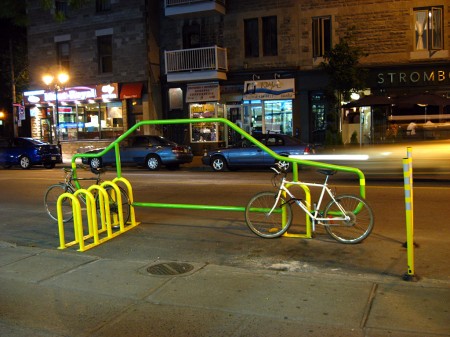This useful post on Gristmill details the economics of power plants. It explains how costs are divided into four categories (fuel costs, non-fuel operating costs, capital recovery, and profits) and how some of these vary with commodity prices and output, while others are fixed. It makes an excellent point about the marginal effects of price changes. Basically, there is an incentive to run your plant whenever the hourly revenues exceed the hourly costs. Since the hourly costs are lower than the real costs associated with an hour of production (because of capital costs, etc), this creates a disincentive to build more capacity. The existing plants that have the option of selling for less than their true cost but more than their true costs will undeprice you. Nuclear plants are a special case of this:
The U.S. power grid has long relied on this bucket (central-station coal and nuclear, specifically) to provide baseload power. You’d be a fool to build these plants if you didn’t first secure guaranteed equity returns, but that’s what our regulatory model is really good at. Note that these plants actually have very high costs, but since they are so cheap to operate on the margin, they tend to depress prices for power on the grid once they are built. The interesting point of comparison here is with renewables — specifically wind and solar — which also have comparatively high capital costs, but very low variable costs. We frequently talk about wind needing over $100/MWh to pencil, but this is a cost discussion, not a price discussion. You may need over $100/MWh to justify the investment in a wind turbine, but a grid dominated by such units will put downward pressure on the prices for power due to it’s low variable costs — just as nuclear and coal have done for decades.
Clearly, these are the kind of second-order economic impacts that regulators need to take into consideration, if they are to help encourage the emergence of an efficient and low-carbon energy system.
In addition to considering the impacts of fixed versus variable costs, it probably makes sense for regulators to encourage profits from energy conservation. If all the benefit goes to the consumer and the producer suffers from reduced revenue, the incentives for improvement are curtailed.
See also:


“Those those who say the costs (of renewables) are still too high: I ask them to consider whether the costs of oil and coal will ever stop increasing if we keep relying on quickly depleting energy sources to feed a rapidly growing demand all around the world. When demand for oil and coal increases, their price goes up. When demand for solar cells increases, the price often comes down. When we send money to foreign countries to buy nearly 70 percent of the oil we use every day, they build new skyscrapers and we lose jobs. When we spend that money building solar arrays and windmills, we build competitive industries and gain jobs here at home.”
–Al Gore
Today, the USA generates roughly 4,000 TWh of electricity from close to 1,000 GW of installed capacity.
It is important to note right away that MWs of capacity and MWhs of generated electricity are by no means proportional. There is more gas-fired capacity than coal-fired capacity (440GW vs 330GW), but coal-fired plants generate two and a half times more power (2,000 TWh vs 800 TWh). It is useful to note in that respect that the capacity utilisation of non-hydro renewables are pretty close to that of the overall system (with 100 TWh generated from 26GW of capacity in 2006).
“Studies in Germany and Denmark show that wind power lowers wholesale prices by 30 to 70% when wind blows, and that the overall savings for consumers far outstrip the cost of guaranteeing to wind producers a regulated tariff. Ironically, the more wind power there is in the system, and the lower the wholesale marker price will be most of the time, which means that the regulated tariff remains a necessity to ensure that wind producers are able to pay off the debt linked to their initial investment. But that regulated tariff is known, is realtively low, and,again, will not need to increase over time, thus ensuring to consumers similarly stable retail prices.”
What is an MW/h?
MWh is a megawatt-hour, or 1000 kilowatt-hours.
Connecting the dots
A simple regulatory fix to the coming power crisis
Our electric regulatory model is broken. It preferentially deploys expensive power sources before cheap ones. It compares the variable costs of dirty fuels to the all-in costs of clean fuels and deludes itself into thinking that the dirty, expensive power is economically advantaged. It places the interests of utility shareholders above the interests of other potential investors in our power grid, massively skewing capital allocation, even while it insulates utility investors from the disciplines imposed by a competitive market.
Potential contribution of wind energy to climate change mitigation